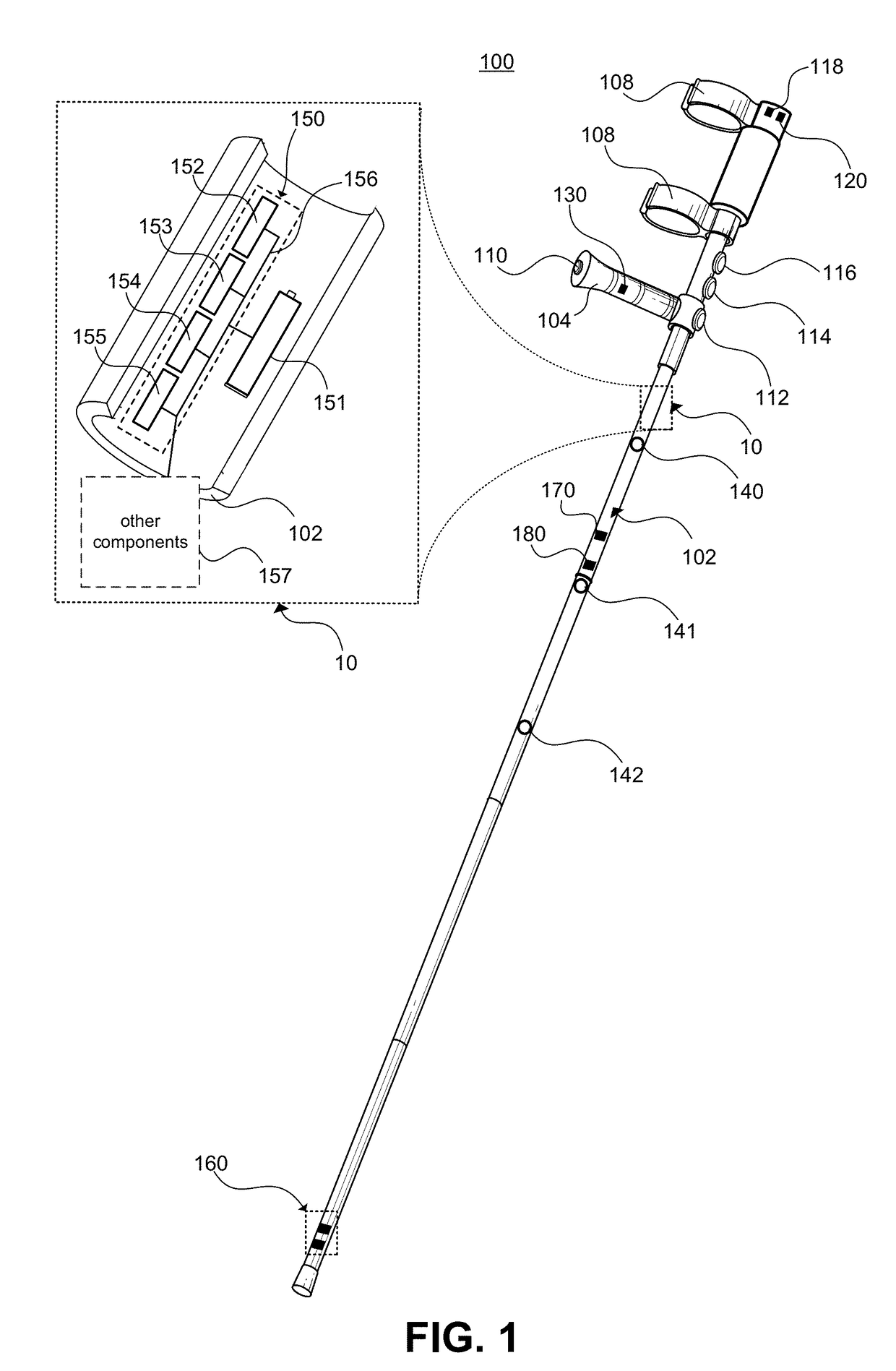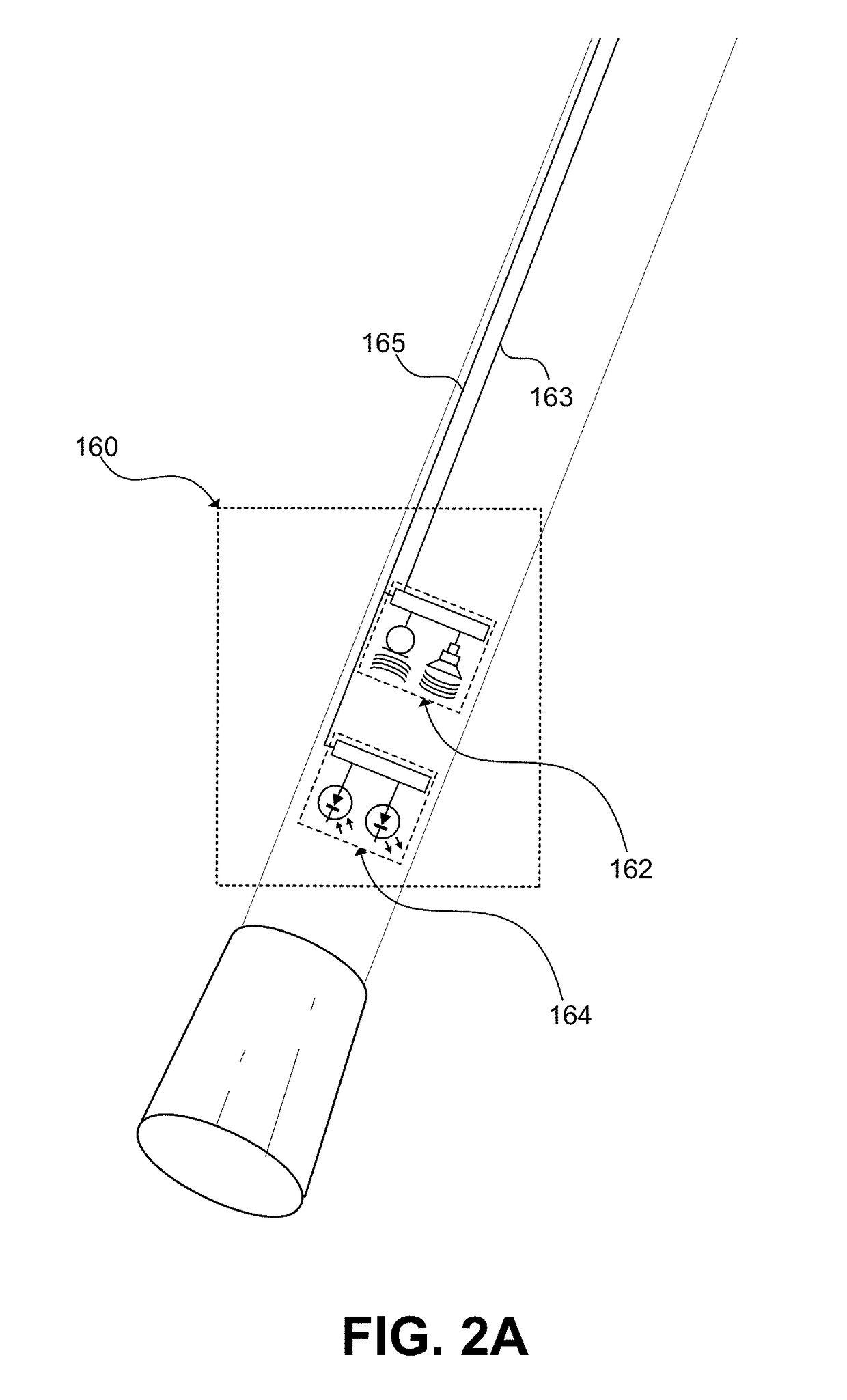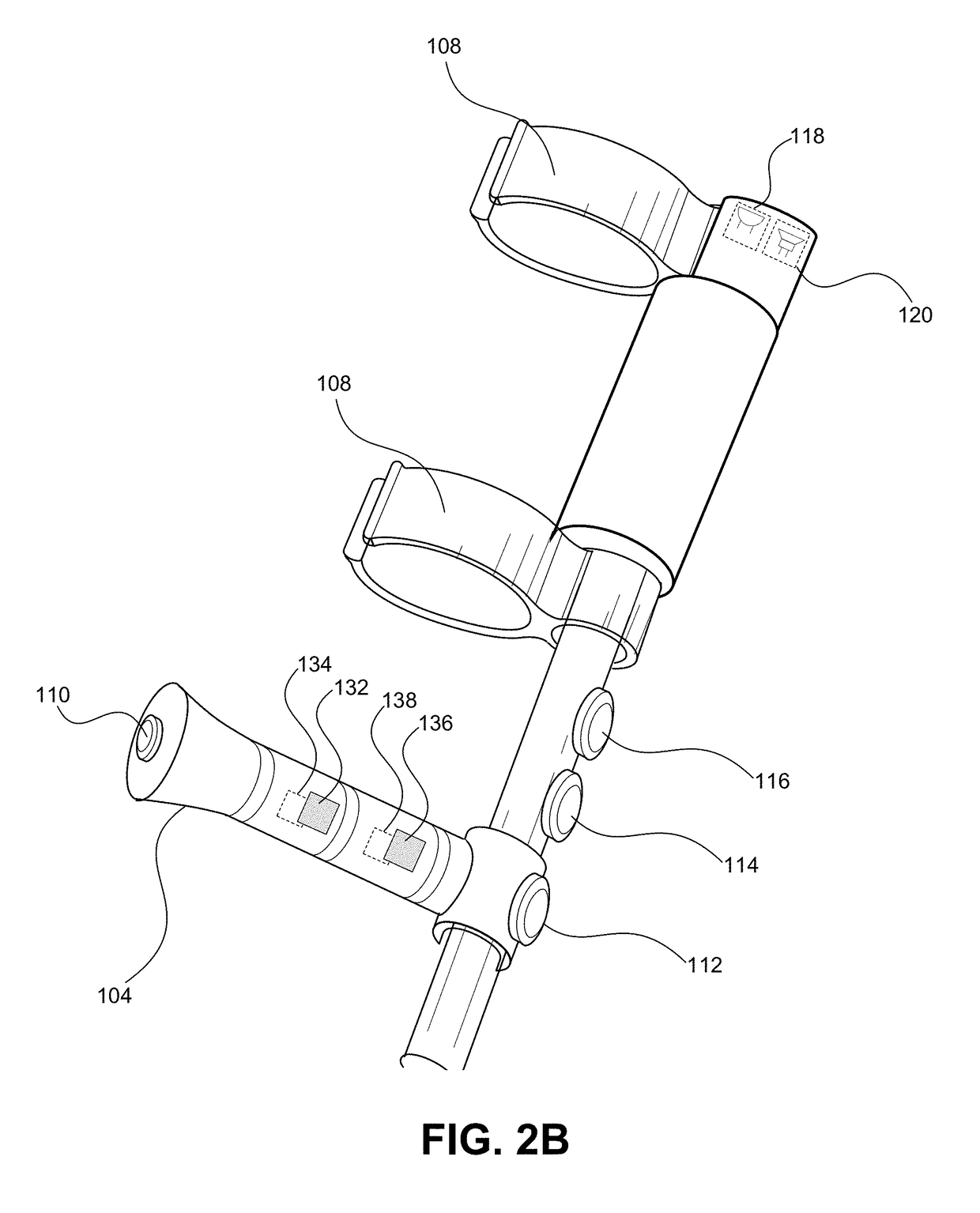Intelligent navigation assistance device
a navigation assistance and intelligent technology, applied in the field of personal navigation technologies, can solve the problems of visual impairment, many difficulties in navigating from one location to another, and often find objects or obstacles in their path, and achieve the effect of facilitating inductive charging
- Summary
- Abstract
- Description
- Claims
- Application Information
AI Technical Summary
Benefits of technology
Problems solved by technology
Method used
Image
Examples
Embodiment Construction
[0030]Embodiments of the technology disclosed herein relate to intelligent navigation assistance technologies for enabling persons with physical limitations (e.g., visually impaired) to more safely and effectively navigate from one location to another, and in come embodiments to summon assistance. The intelligent navigation assistance technologies disclosed herein enable physically impaired users to enhance their ability to navigate a course of travel by efficiently utilizing one or more resources of a mobile computing device with which an intelligent navigation assistance device (hereafter “INAD”) may be paired. As disclosed herein, such systems and devices may intelligently assist persons with physical limitations to more safely and effectively navigate their course of travel, and in some instances to communicate with third parties as necessary. Example mobile computing device resources may include GPS resources (e.g., GPS modules), mapping resources (e.g., mapping applications su...
PUM
 Login to View More
Login to View More Abstract
Description
Claims
Application Information
 Login to View More
Login to View More - R&D
- Intellectual Property
- Life Sciences
- Materials
- Tech Scout
- Unparalleled Data Quality
- Higher Quality Content
- 60% Fewer Hallucinations
Browse by: Latest US Patents, China's latest patents, Technical Efficacy Thesaurus, Application Domain, Technology Topic, Popular Technical Reports.
© 2025 PatSnap. All rights reserved.Legal|Privacy policy|Modern Slavery Act Transparency Statement|Sitemap|About US| Contact US: help@patsnap.com



